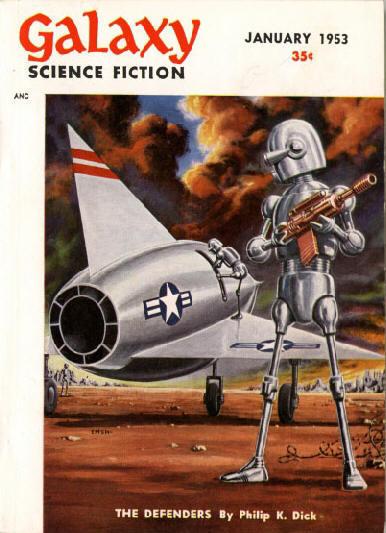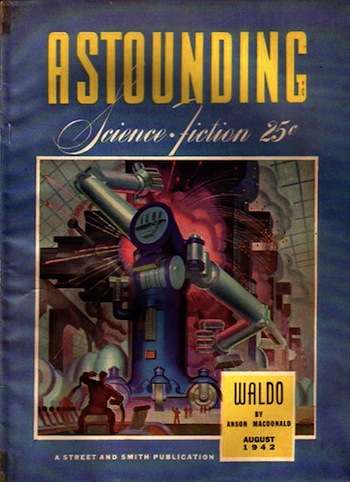Science Fiction
Dictionary
A B C D E F G H I J K L M N O P Q R S T U V W X Y Z
Fukushima Plant Needs Radiation-Proof Scorpion Robots

The robots used at the Fukushima nuclear power plant in Japan are failing due to the high levels of radiation. The meltdown was triggered during the earthquake and tsunami of 2011. It's too much even for these specially hardened scorpion bots, as seen in the following video.
(Fukushima scorpion robots radiation fail)
The radiation levels on the site are far higher than any human could possibly survive, so engineers are using purpose-built “scorpion” robots with cameras attached to survey the scale of the damage.The latest attempt to harvest data on Fukushima failed after a robot designed by Toshiba to withstand high radiation levels died five times faster than expected.
The robot was supposed to be able to cope with 73 sieverts of radiation, but the radiation level inside the reactor was recently recorded at 530 sieverts.
A single dose of one sievert is enough to cause radiation sickness and nausea; 5 sieverts would kill half those exposed to it within a month, and a single dose of 10 sieverts would prove fatal within weeks.
Radiation-proof robots have been recommended by science fiction writers ever since the dawn of the cold war. In his classic 1953 story The Defenders, Philip K. Dick describes leadies:

(From The Defenders, by Philip K. Dick)
Now the surface was a lethal desert of slag and rolling clouds. Endless clouds drifted back and forth, blotting out the red Sun. Occasionally something metallic stirred, moving through the remains of a city, threading its way across the tortured terrain of the countryside. A leady, a surface robot, immune to radiation, constructed with feverish haste in the last months before the cold war became literally hot.
(Read more about Philip K. Dick's leady)
A year earlier, science fiction fan and sometimes writer Mari Wolf describes lead-bodied androids in her 1952 story Robots of the World! Arise!:
I'd designed the androids myself, plotted out the pile locations, set up the simplified reactors. And now it was making money. For men to work in a uranium plant you need yards of shielding, triple-checking, long cooling-off periods for some of the hotter products. But with lead-bodied, radio-remote controlled androids, it's easier.
(Read more about Mari Wolf's lead-bodied androids)
As so often happens, I have to give sf Grandmaster Robert Heinlein his due and mention the waldo from his 1942 novella of the same name (using his pseudonym Anson MacDonald). The country's nascent nuclear industry liked the idea, and actually created similar devices to deal with nuclear material - they liked the name, too.

Via Independent.
Scroll down for more stories in the same category. (Story submitted 4/11/2017)
Follow this kind of news @Technovelgy.| Email | RSS | Blog It | Stumble | del.icio.us | Digg | Reddit |
Would
you like to contribute a story tip?
It's easy:
Get the URL of the story, and the related sf author, and add
it here.
Comment/Join discussion ( 0 )
Related News Stories - (" Robotics ")
Artificial Skin For Robots Is Coming Right Along
'... an elastic, tinted material that had all the feel and appearance of human flesh and epidermis.' - Harl Vincent (1934)
Robot Guard Dog On Duty
I might also be thinking of K-9 from Doctor Who.
Wearable Artificial Fabric Muscles
'It is remarkable that the long leverages of their machines are in most cases actuated by a sort of sham musculature...' HG Wells, 1898.
Dancing Robots Taught Dance Moves
'A clockwork figure would be the thing for you...' Jerome K. Jerome, 1893.
Technovelgy (that's tech-novel-gee!) is devoted to the creative science inventions and ideas of sf authors. Look for the Invention Category that interests you, the Glossary, the Invention Timeline, or see what's New.
Science Fiction
Timeline
1600-1899
1900-1939
1940's 1950's
1960's 1970's
1980's 1990's
2000's 2010's
Current News
The Zapata Air Scooter Would Be Great In A Science Fiction Story
'Betty's slapdash style.'
Thermostabilized Wet Meat Product (NASA Prototype)
There are no orbiting Michelin stars. Yet.
Could Crystal Batteries Generate Power For Centuries?
'Power could be compressed thus into an inch-square cube of what looked like blue-white ice'
India Ponders Always-On Smartphone Location Tracking
'It is necessary... for your own protection.'
Amazon Will Send You Heinlein's Knockdown Cabin
'It's so light that you can set it up in five minutes by yourself...'
Is It Time To Forbid Human Driving?
'Heavy penalties... were to be applied to any one found driving manually-controlled machines.'
Replace The Smartphone With A Connected Edge Node For AI Inference
'Buy a Little Dingbat... electropen, wrist watch, pocketphone, pocket radio, billfold ... all in one.'
Artificial Skin For Robots Is Coming Right Along
'... an elastic, tinted material that had all the feel and appearance of human flesh and epidermis.'
Robot Guard Dog On Duty
I might also be thinking of K-9 from Doctor Who.
Wearable Artificial Fabric Muscles
'It is remarkable that the long leverages of their machines are in most cases actuated by a sort of sham musculature...'
BrainBridge Concept Transplant Of Human Head Proposed
'Briquet’s head seemed to think that to find and attach a new body to her head was as easy as to fit and sew a new dress.'
Google's Nano Banana Pro Presents Handwritten Math Solutions
'...copy was turned out in a charming and entirely feminine handwriting.'
Edible Meat-Like Fungus Like Barbara Hambly's Slunch?
'It was almost unheard of for slunch to spread that fast...'
Sunday Robotics 'Memo' Bot Has Unique Training Glove
'He then started hand movements of definite pattern...'
Woman Marries Computer, Vonnegut's Dream Comes True
'Men are made of protoplasm... Lasts forever.'
Natural Gait With Prosthetic Connected To Nervous System
'The leg was to function, in a way, as a servo-mechanism operated by Larry’s brain...'
